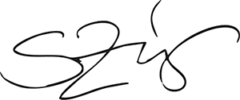La semiotica, le arti, il design, la scrittura

Dopo varie, diverse e avventurose esperienze di insegnamento fra Milano e Francoforte (corsi di licenza media per i lavoratori italiani alla Opel di Rüsselsheim e per quelli detenuti nel penitenziario di Dieburg; un ricerca sulla lingua degli emigrati di seconda generazione alla Fachhochschule di Wiesbaden; dodici anni all’Istituto d’Arte di Monza) ho incontrato di nuovo la semiotica iniziando a collaborare prima con Giovanni Anceschi, poi con Massimo Bonfantini in una delle poche “riserve umanistiche” del Politecnico di Milano, fino ad arrivare alla docenza alla Scuola del Design.
Mi sono laureato con una tesi sui sistemi di scrittura e sulla poesia visiva. È da allora (1981) che ho in programma di scrivere un libro di semiotica della scrittura o grammatologia semiotica. Prima o poi arriverà. La scrittura visuale è in fondo la mia grande passione, da quando ho conosciuto le opere e l’amicizia di , e . E di altri ancora. La scrittura visuale è l’incontro di tre passioni: la parola poetica, l’immagine inventiva, il design della comunicazione.
Nel 1992, grazie a Pasquale Campanella e a Mario Gorni, ho anche allestito la mia prima e unica mostra artistica: . Quest’opera l’ho poi trasformata in ipertesto ().
La scienza dei segni l’ho appresa con Umberto Eco, mio relatore di tesi, e con Massimo Bonfantini, che mi chiamò a collaborare alla cattedra di Semiotica al Poli, nei primi anni di vita del corso di laurea in disegno industriale.
Con Massimo Bonfantini mi occupo dell’organizzazione dei seminari del e della cura della che porta lo stesso nome. Massimo mi ha insegnato molto di Peirce, ma ancor più mi ha aiutato a capire dove cercare la ragione più bella degli studi semiotici: nella pratica della vita inventiva.
Anche il design è arrivato sulla mia strada per mera coincidenza, più che per destino. Prima attraverso gli studi artistici (Walter Gropius e la Bauhaus di Giulio Carlo Argan è stata una lettura di formazione fondamentale); poi insegnando all’; infine iniziando a collaborare, come redattore, alla rivista “Ergonomia”. Il design mi affascina e mi irrita. Perché il design è necessario, e perché molto design è superfluo.
In ogni caso, i miei interessi di ricerca nell’ambito della semiotica e del design riguardano:
la semiotica del progetto, ossia sul ruolo dell’attività interpretativa (la semiosi) nei processi progettuali; la comunicazione accessibile, ossia su una comunicazione orientata all’ottenimento di benefici e servizi per l’utenza; lo sviluppo degli aspetti dialogici del design, inteso come progettualità; lo studio dei processi inventivi
Semiotics, the Arts, Design, Writing
After various and diverse adventurous teaching experiences between Milan and Frankfurt am Main (Middle school level certification courses for Italian workers at Opel in Rüsselsheim and for those held within the Dieburg penitentiary; a language study on second-generation immigrants at the Fachhochschule in Wiesbaden; twelve years at the Institute of Art of Monza.), I crossed paths with Semiotics again by collaborating first with Giovanni Anceschi, then with Massimo Bonfantini in one of the few humanistic departments within the Polytechnic University of Milan, until I became a professor at the School of Design.
I graduated with the completion of a thesis on systems of writing and visual poetry. It’s been since roughly around 1981 that I have planned to write a book on semiotics or semiotic grammatology. Sooner or later it will be realized. Visual writing, looking back, has been my greatest passion since I came to know the works of and befriended Vincenzo Accame, Emilio Isgrò and Ugo Carrega and many others as well. Visual writing is the intersecting of three passions: poetic wording, the inventive image and the design of communication.
In 1992, thanks to Pasquale Campanella and Mario Gorni, I also set up my first and only artistic exhibition: The office of Mr. Blume, employee. I then transformed this work into hypertext ().
I learned the science of the signs with Umberto Eco, my thesis advisor, and with Massimo Bonfantini, who asked me to collaborate with the Semiotics department at Polytechnic University in the early years of the course in industrial design.
With Massimo Bonfantini I am in charge of organizing seminars of and editing an bearing the same name. Massimo taught me a lot about Peirce, and even more he helped me to understand where to find the most beautiful reason for studying of semiotics: in the practice of inventive life.
Design as well has crossed my path by mere coincidence, rather than by destiny. First through art studies (Walter Gropius and the Bauhaus by Giulio Carlo Argan was a fundamental reading); then teaching at the ; finally starting to collaborate, as an editor, in the magazine “Ergonomia”. Design fascinates and it irritates me. This is because design is necessary, but at the same time, a lot of design is superfluous. In any case, my research interests in the field of semiotics and design are:
Semiotics of the project, that is, on the role of interpretation (semiosis) in design processes; Accessible communication, that is, communication aimed at obtaining benefits and services for the user; The development of the dialogical aspects of design, understood as project-making activity; The study of the inventive processes
